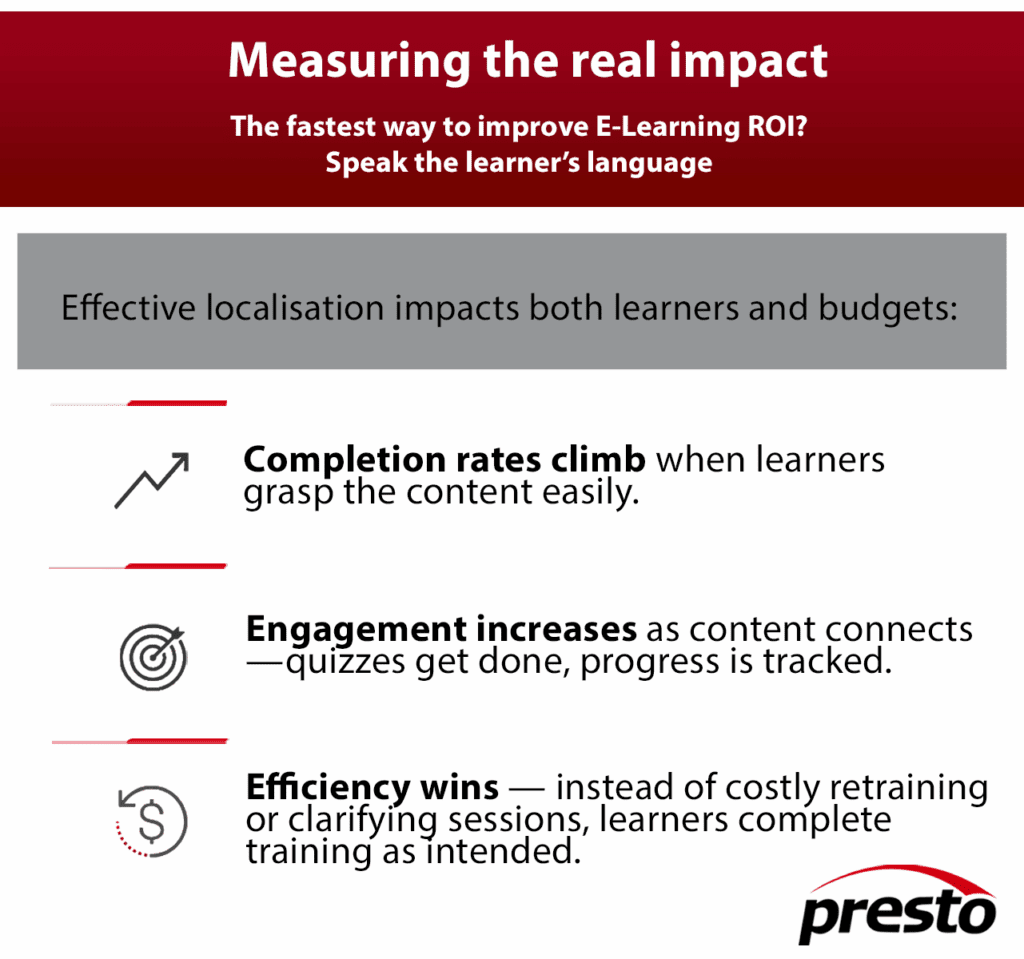Every year, companies and institutions invest millions in online training only to watch completion rates stall. Often, the problem isn’t the content itself, but the way it’s delivered. If your learners have to fight the language before they can focus on the material, you lose their attention (and your investment). In this article, we look at how professional localisation turns abandoned courses into completed certifications, and why it’s one of the simplest ways to improve ROI in e-learning.
Why learners drop out — and why it’s preventable
Completion rates in large-scale online courses can fall below 15%. In corporate training, the numbers are better, but still far from ideal. One common factor? Language.
Research by the European Commission shows that learners process and retain information far better in their native language. This isn’t just a comfort issue, it’s about accuracy, confidence, and the ability to apply what they’ve learned without hesitation.
Interesting number: According to a study by Ulatus, about 90% of learners prefer training in their native language.
When “good enough” translations cost more than they save
A basic translation might tick the box for having the course “available” in another language. But if the tone feels unnatural, the examples are out of context, or the interface is confusing, learners disengage. That means higher drop-out rates, more support queries and additional cost for retraining.

Real example: Siemens streamlined its e-learning localisation by centralizing translation
Siemens faced fragmented e-learning localisation across countries. By shifting to a centralised strategy, using consistent terminology, and working with translators who understood their technical content, they cut localisation time by over 30%, increased learner satisfaction, and reduced requests for clarification from the field.
What professional localisation delivers
A solid e-learning localisation process isn’t just translation. True localisation means:
- Adapting not just words, but examples, visuals, and navigation to each market;
- Keeping every language version updated in sync with the original;
- Using industry-specific terminology consistently across modules;
- Ensuring audio, captions, and UI all match the learner’s expectations.
How PRESTO supports your e-learning success
We work with specialised linguists in education, technology, and compliance. Our process ensures:
- Consistency across all formats: from SCORM packages to downloadable guides;
- Fast updates across all languages when content changes;
- Adherence to local regulations and cultural standards.
Try it with no risk
Ready to see how your course performs when localised properly? Send us a sample (e.g. one slide, a short assessment, or a page from your manual) and we’ll localise it free of charge. You’ll see exactly how your content can sound to learners worldwide, with our notes on terminology and style.
